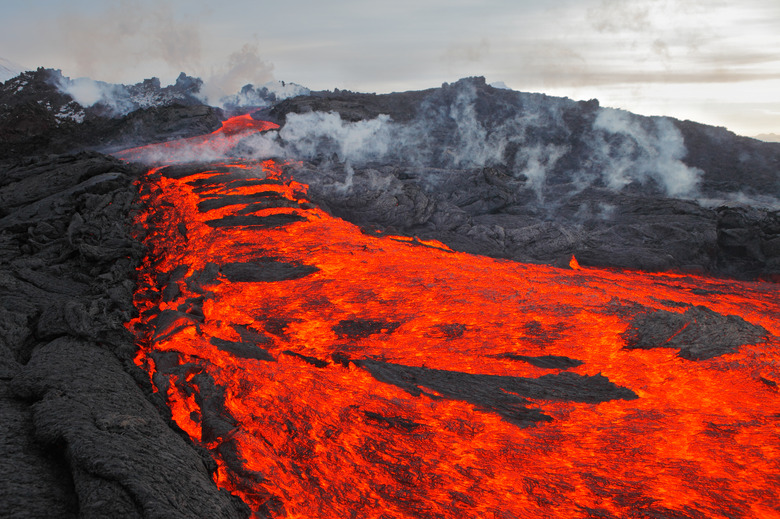What Is The Difference Between Constructive & Destructive Earth Processes?
Our Earth is ever changing. Some of these changes, like the creation of the Grand Canyon, take millions of years to happen, and some of them are catastrophic changes that occur in seconds. These changes to our Earth can be categorized as either constructive forces or destructive forces.
Slow Constructive Forces
Slow Constructive Forces
Constructive Earth processes are changes that add to the surface of the Earth, and some of them take millions of years to occur. The Hawaiian Islands are a great example of a slow constructive change. These islands have formed over millions of years due to a hot spot volcano. This type of volcano forms over an area in the Earth's crust where the crust is very thin and lava consistently makes its way to the surface. Each year the island that is currently over the hot spot (Hawaii) adds new land. There is even another island being formed that should reach above the surface of the ocean in 10,000 to 100,000 more years. Another example of a slow constructive force is the deposition of sediment at the mouth of a river. Water carries sediment down river and as the river becomes more shallow, the sediment is deposited, forming landforms such as deltas. Mountains are also an example of a slow constructive force due to two tectonic plates being pushed into each other.
Quick Constructive Forces
Quick Constructive Forces
Some changes to the Earth take place in a matter of seconds instead of millions of years. The main quick constructive force is a volcano. A volcano that erupts violently can send lava and ash shooting out within seconds. When that lava cools, it hardens into new rock.
Slow Destructive Forces
Slow Destructive Forces
Destructive forces break down land. The two main forces that break down land slowly are weathering and erosion. Weathering is the breaking down of rocks due to forces such as wind and water. The pieces of rock are then moved elsewhere through the process of erosion. Weathering and erosion take millions of years to have an effect on the Earth, but those effects can be dramatic. The Grand Canyon and Monument Valley in Arizona are excellent examples of weathering and erosion.
Quick Destructive Forces
Quick Destructive Forces
Quick destructive forces are forces such as earthquakes and tsunamis that can change the surface of our Earth in seconds. Tsunamis can flatten the Earth and erase hills. A tsunami will take thousands of feet of Earth and drag it back to the ocean floor. Earthquakes can cause the Earth to crack, causing sinkholes or other such phenomena. Quick destructive forces can also be things like landslides. Whole mountain sides can move to the base of a mountain in a matter of seconds.
Cite This Article
MLA
Canales, Heather. "What Is The Difference Between Constructive & Destructive Earth Processes?" sciencing.com, https://www.sciencing.com/difference-constructive-destructive-earth-processes-8630741/. 13 March 2018.
APA
Canales, Heather. (2018, March 13). What Is The Difference Between Constructive & Destructive Earth Processes?. sciencing.com. Retrieved from https://www.sciencing.com/difference-constructive-destructive-earth-processes-8630741/
Chicago
Canales, Heather. What Is The Difference Between Constructive & Destructive Earth Processes? last modified March 24, 2022. https://www.sciencing.com/difference-constructive-destructive-earth-processes-8630741/
